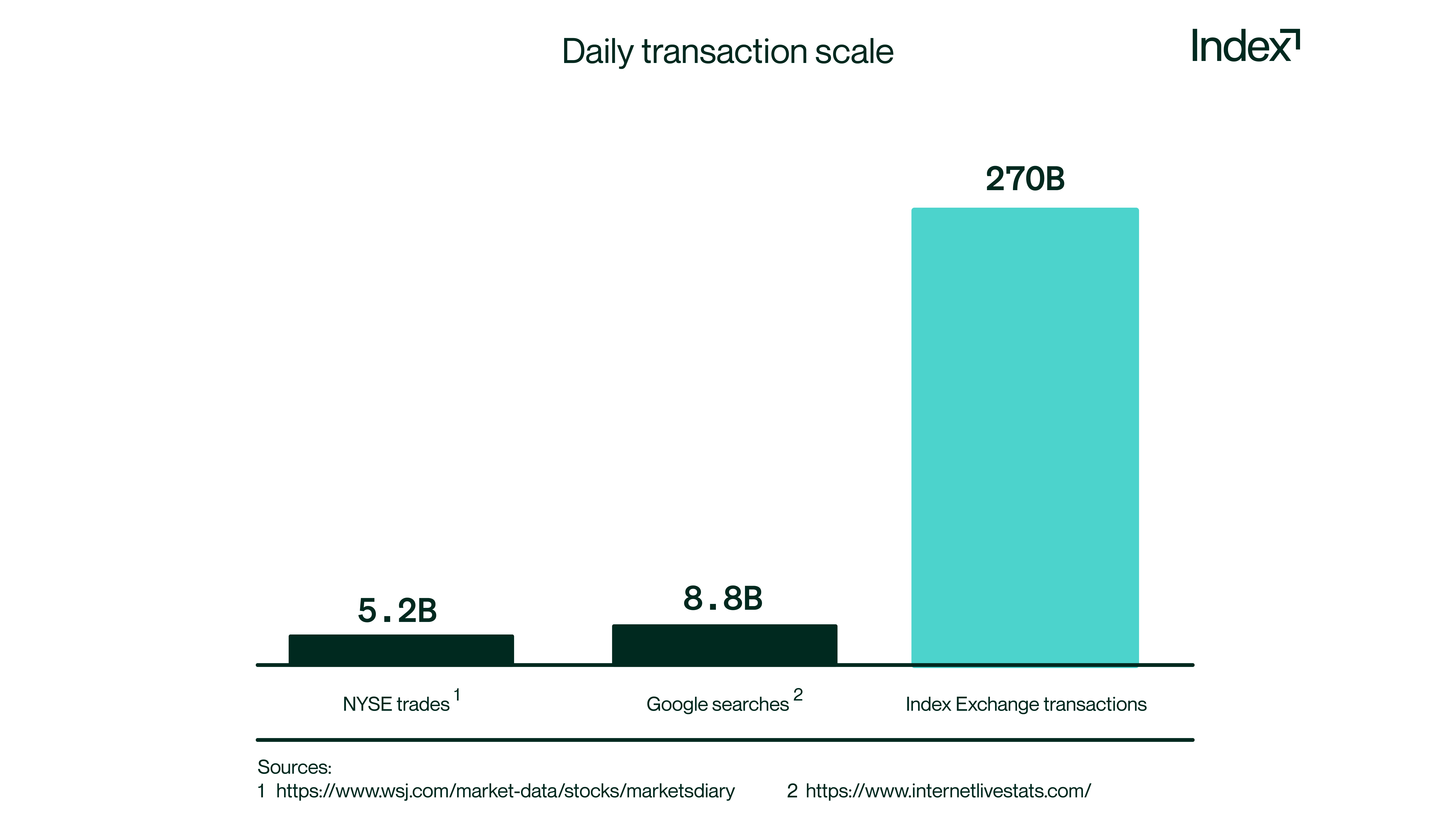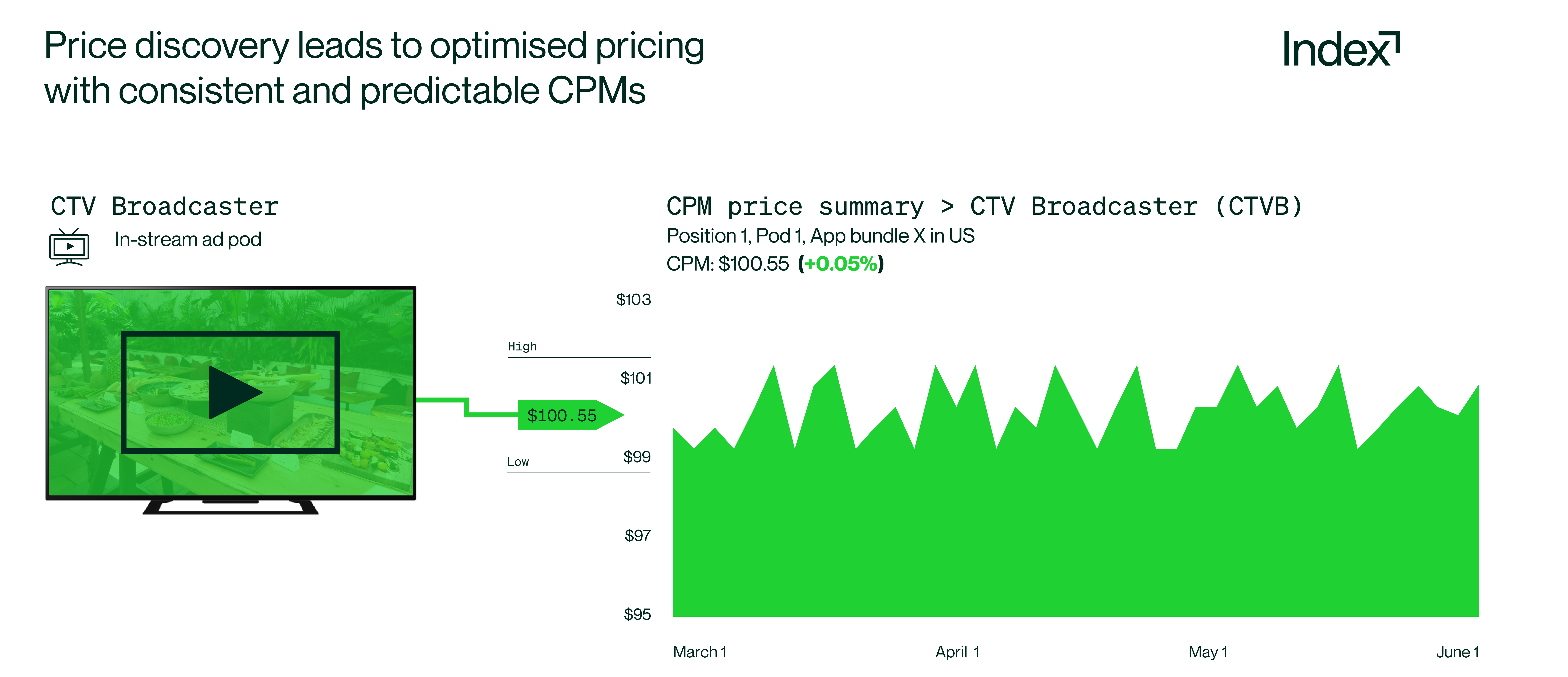Programmatic ad spend continues to reach new milestones year after year as marketers invest more of their ad dollars in digital channels. While this scale is impressive, the focus for programmatic growth from here can’t be how we grow an addressable market from 91% to 100%; that outcome is surely inevitable.
Rather, we must focus on how we can be more efficient with the opportunities we’re already processing. This will help open the addressable market of programmatic even further. One way to do so is to follow in the path of every other large-scale market and invest in improving end-to-end price discovery.
Because our marketplace hasn’t yet prioritised price discovery, programmatic today is governed (and held back) by asymmetric information. Marketers can’t always fully ascertain the true value of purchased media, and the competitive pricing dynamics behind it, to better optimise their return on ad spend. Conversely, media owners struggle to understand the worth of their inventory to maximise monetisation.

Price discovery improves transparency between buyers and sellers and makes it easier to determine the accurate value of an impression.
What is price discovery?
The concept of price discovery—determining the fair price of a particular good or service based on supply and demand—is a primary function of every public market, from ancient souks to auction houses.
Financial markets like the New York Stock Exchange (NYSE) and Nasdaq do price discovery exceptionally well. All investors benefit from real-time price transparency. You don’t have to be a Wall Street trader to gain the benefits of this—a retail investor can see bid and ask prices as well as historical transaction prices to understand the market value of a stock by opening up eTrade, Robinhood, Webull, or any other trading app. With billions of shares traded each day, these prices reflect a strong balance between supply and demand.
It seems simple, but imagine buying a share in Apple stock where you had no guidance or trading history to refer to, and to a large extent you get the current state (still) of programmatic.
Things certainly get more advanced for the Wall Street type, where the massive number of transactions creates valuable data that market makers use to further facilitate price discovery. Known as level II and level III quotes, this pricing information provides more market depth, allowing investors to understand exactly what went into determining the prevailing market rate. They can then make an informed decision on the best possible stock price. Trade by trade, it is all transparent.

The number of daily transactions on programmatic exchanges has long since surpassed the number of trades on financial exchanges like the NYSE—at Index we process more than 270 billion daily transactions on our exchange alone. Yet, price discovery and transparent pricing data are still missing in programmatic advertising.
It’s high time to change that.
The long-term benefits of price discovery pay off
Transparent pricing guidance shared between buyers and sellers will lead to increased win rates and ad spend, and create a more efficient, effective, and trusted market. However, there’s a perception that the asymmetric dynamic created through the lack of pricing transparency gives one party leverage over another.
That may be true on occasion in the short term, but it’s not the reality in the long term. Rather, it’s leading to low win rates, poor outcomes, and decreased trust.
Programmatic has sacrificed long-term gains for short-term success before. For a long time on the web, media owners resisted enabling domain transparency thinking that it could cannibalise direct sales in the short term.
What it actually did was give fraud a place to hide and diminish the perceived value of digital media, as bad actors capitalised on the vague identifiers to leech spend away from media owners. As soon as the industry implemented transparent standards like ads.txt and leaned into transparency in the supply chain (and more recently, the schain object), ad spend blossomed, CPMs rose, and programmatic boomed.
The same can be said of enabling price discovery. Pricing information is as important to a marketer as it is to a media owner, and it’s in a seller’s best interest to share pricing guidance openly between both parties—even if at first it might feel uncomfortable or unstrategic.
Buyers need to better understand the potential ROI of an impression opportunity to determine its value. We anticipate early adopters who can help solve this challenge will be the big winners. Over time, buyers might start to pass by opportunities from media owners that don’t provide insight into market dynamics because they can’t predict outcomes upfront.
Similarly, today media owners don’t have insight into why buyers bid what they bid for any given impression opportunity. CPMs in the $100 range happen in programmatic (rarely, but they do), yet it’s not often that a seller knows why. Facilitating more transparency through price discovery would provide a better understanding of how buyers value publisher inventory and open an opportunity to optimise pricing.
It’s time to invest in price discovery
There are a few crucial ways our industry can solve this problem and graduate the programmatic marketplace beyond our current state of asymmetric pricing.
Some are already underway, such as the increased visibility that schain—a spec that lists the seller IDs of each party involved in an impression—has gained over the past two years. The widespread increase in tagIDs and global placement IDs further improves transparency by providing a consistent and accurate assessment of each ad slot. This is because once you have defined a segment of media, you can carry over historical pricing to that segment to start to address the fundamental gap between supply and demand. Think of it as a critical building block.
The next block is enabling true price discovery and price setting. Media owners should make pricing a strategic priority. As bidders operate with increasing levels of granularity, it’s not enough to set basic—or worse, static—pricing floors. Stopping optimisation there leaves money on the table. And most importantly, do not set prices or floors in silence. Floors should always be transparent to the buyer, and pricing guidance should always be available. This is the key to creating predictable outcomes for all parties.
Exchanges also play an important role in leading more innovation in pricing, and it’s an area we’re investing heavily in at Index. Here’s how:
- Client Audit Logs (CALs): We provide CALs, a receipt for every transaction, to help both media owners and buyers gain clarity into pricing and ad spend through transparent impression-level reporting.
- Market Price: This new exchange intelligence feature provides pricing guidance for all transactions on our exchange to enable fair and competitive auctions. Smarter price floors help buyers bid more purposefully, leading to higher win rates and increased demand for media owners. We’ve already seen a 16% increase in win rates in just a few weeks after rolling out Market Price to all bid requests, a major investment area at Index that is just getting started.
- Machine learning: We’re continuing to invest in machine learning to iterate, learn, and train our exchange to be the most efficient, effective, and expansive exchange. Machine learning can help optimise impression value or yield management, unlocking more insights for media owners and buyers to enable more efficient campaigns.
Bringing advanced price discovery to programmatic advertising is a long game that requires deep investment. Now is the time for every player across the ecosystem to join the dialogue and start building toward the future.
Eventually, we’ll reach a state where pricing is optimised and CPMs are discoverable and predictable. And the $100 CPMs that are a welcome surprise, albeit rarity, in programmatic now may yet become the norm in the not too distant future for discoverable inventory that warrants the premium.





